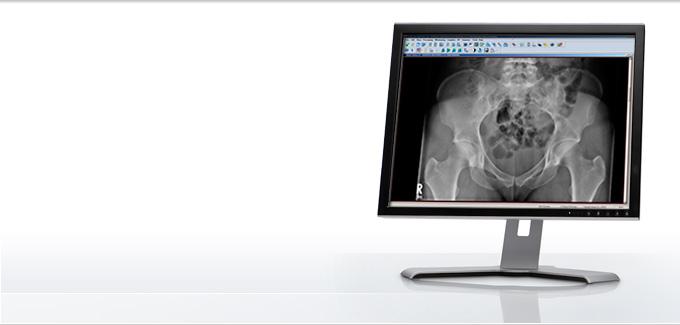
Carestream PACS workstation
June 15, 2011 — Carestream Health showcased productivity-enhancing embedded 3-D tools on its Carestream Vue picture archiving and communication system (PACS) workstation at the annual “Workstation Face-Off” during the International Symposium on Multidetector-Row Computed Tomography. The 2011 event was held on Tuesday, June 14, in San Francisco.
Hosted by the International Society of Computed Tomography (ISCT), the “Workstation Face-Off” requires radiologists to process and interpret several complex computed tomography (CT) imaging studies. According to the ISCT, this event is designed “to stretch the capabilities of the workstations to their limits.” This year each vendor was asked to present four cases: musculoskeletal; brain CTA (including skull removal); vascular; and liver (including segmentation of the eight Couinaud segments). Three minutes were allowed per case, plus one additional cumulative minute for all the cases combined.
Other participants used dedicated, highly specialized 3-D workstations, some of which employ special purpose hardware to achieve the required speed. Despite these specialized workstations, some suppliers could not finish the cases within the time limits. Radiologist Michalle Soudack, M.D., head of pediatric radiology at the Safra Children’s Hospital in Israel, presented cases for Carestream Health during the event.
Native Tools Streamline Workflow
Carestream Health was one of the first companies to have advanced 3-D processing and image analysis tools native to its Vue PACS workstation. Workflow is streamlined since radiologists can read any type of imaging exam from a PACS workstation and do not need to move to dedicated 3-D workstations with different user interfaces, tools and log ins. In addition, the Carestream Vue PACS architecture enables 3-D and other advanced features to be used on any Web-enabled PC or workstation.
Advanced processing capabilities of the Carestream PACS platform include: real-time 3-D vessel analysis including automatic abdominal and cardiac vessel segmentation capabilities; automatic registration of volumetric exams including multi-planar reformatting (MPR), maximum inspiratory pressure (MIP) and minimum intensity projection (MinIP); cardiac exam review; positron emission tomography (PET) and computed tomography (CT) reading tools; orthopedic surgical planning; virtual colonoscopy and mammography-specific reading tools.
For more information: www.carestream.com


 July 25, 2024
July 25, 2024 








